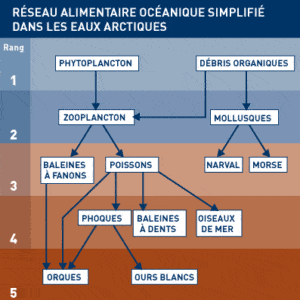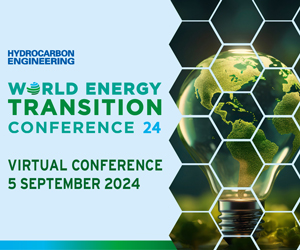“`html
The protection of your personal data is an essential priority on our site.
We use various tools to ensure a secure and personalized online experience.
Understanding how and why we collect your information is fundamental.
We employ cookies and data to provide and maintain our Google services. These technologies also allow us to track service interruptions and protect against spam, fraud, and abuse. By analyzing public engagement and site statistics, we can better understand how our services are used and thus improve their quality. If you choose to accept all, we will also use these tools to develop and enhance new services, measure the effectiveness of advertisements, and display personalized content as well as targeted ads based on your settings. On the other hand, if you prefer to refuse all options, we will not use cookies for these additional purposes. Non-personalized content relies on elements such as the content you are currently viewing, your activity in your active search session, and your location. Non-personalized ads are influenced by the content you are viewing and your general location. For an age-appropriate experience, we also use cookies when relevant. Select “More options” for additional information, including details on managing your privacy settings. You can also visit g.co/privacytools at any time to adjust your preferences.
“`

Table of Contents
Toggleintroduction to the development of tidal turbine blades in Wales
The Wales is increasingly establishing itself as a key player in the field of renewable energy, particularly through the development of tidal turbines. These devices harness the energy from tides to produce electricity in a sustainable and environmentally friendly manner. With its vast coastlines and powerful marine currents, Wales offers ideal terrain for the deployment and optimization of these innovative technologies.
what are the recent innovations in tidal turbine blades
The next-generation tidal turbine blades benefit from numerous technological innovations. The use of advanced composite materials allows for reduced weight while increasing the strength and durability of the blades against harsh marine conditions. Additionally, the integration of smart sensors enables real-time monitoring of the performance and condition of the blades, thus facilitating preventive maintenance and extending the lifespan of the turbines.
Moreover, recent research has led to the development of optimized hydrodynamic designs, enhancing tidal energy conversion efficiency. These advancements are essential for maximizing energy production while minimizing environmental impact, thereby aligning technological development with sustainability goals.
how do new blades contribute to environmental sustainability
The new generations of tidal turbine blades play a crucial role in promoting environmental sustainability. Their innovative design minimizes disruption to marine ecosystems, notably by reducing underwater noise and risks to aquatic wildlife. Furthermore, improved energy efficiency reduces the need to rely on non-renewable resources, thus contributing to the fight against climate change.
By integrating recyclable materials and environmentally friendly manufacturing processes, the tidal turbine sector in Wales is also committing to an eco-responsible approach. This aligns with the broader framework of the blue economy, which aims to reconcile economic development with the preservation of marine resources.
what are the technical challenges encountered in the development of blades
The development of next-generation tidal turbine blades is not without technical challenges. One of the main obstacles lies in designing blades capable of withstanding extreme hydrodynamic forces while maintaining optimal efficiency. Engineers must constantly innovate to find a balance between robustness and performance, using advanced numerical simulations and real-world testing.
Another major challenge concerns the maintenance and repair of blades in marine environments. Limited accessibility to installation sites and harsh environmental conditions complicate maintenance operations. To address these difficulties, solutions such as remote monitoring systems and predictive maintenance technologies are under development, allowing for proactive management of equipment and reducing downtime.
what is the economic impact of tidal turbine development in Wales
The development of tidal turbines in Wales has a significant economic impact. By promoting the creation of local jobs in the sectors of research, manufacturing, and maintenance, this sector contributes to regional economic growth. Moreover, investment in renewable energies attracts capital and international partnerships, thus strengthening Wales’ position on the global technological innovation stage.
The economic benefits extend beyond direct jobs alone. The adoption of tidal energies also stimulates the local economy by encouraging the development of port infrastructures and electricity distribution networks. This creates additional opportunities for local businesses and strengthens the national energy infrastructure, making Wales less dependent on imported energy sources.
how do current projects influence the future of tidal energies
The ongoing projects in Wales are important catalysts for the future of tidal energies. For example, initiatives such as the installation of advanced prototypes allow for testing and optimizing new blade technologies in real conditions. These projects provide valuable data to improve future designs and enhance the overall efficiency of tidal turbines.
Furthermore, collaboration between universities, research centers, and the private industry fosters a dynamic innovation ecosystem. This synergy between different players allows knowledge sharing and the rapid development of innovative solutions. Such projects position Wales as a leader in the field of tidal energies, inspiring other regions to follow this path toward a sustainable energy future.
what are the future prospects for tidal turbines in Wales
The future prospects for tidal turbines in Wales are promising. With the acceleration of global efforts to reduce carbon emissions and promote renewable energies, tidal turbines represent a viable and effective solution. Continuous technological advancements, coupled with increased government support, should allow for wider deployment and a significant increase in tidal energy production.
Moreover, the expansion of local skills and specialized training helps strengthen Wales’ industrial and technical capacities. This paves the way for better competitiveness in the international market and an increase in exports of innovative tidal technologies. Additionally, integrating tidal turbines into the national energy mix supports energy transition goals and long-term energy supply security.
how do Welsh innovations fit into the global blue economy
Welsh innovations in tidal turbines fit perfectly within the framework of the blue economy, which aims to optimize the use of marine resources while preserving ecosystems. By developing advanced technologies for harnessing tidal energy, Wales contributes to a greener and more resilient economy. These efforts align technological development with sustainability and environmental protection goals.
Moreover, Welsh innovations promote the creation of synergies between different sectors of the blue economy, such as sustainable fishing, clean maritime transport, and ecologically responsible tourism. This integrated approach strengthens the economic resilience of coastal communities and encourages sustainable business practices, thereby ensuring a prosperous future for generations to come.
what are the international collaborations in the development of tidal turbines
The development of tidal turbines in Wales benefits from numerous international collaborations. By working with foreign partners, Welsh researchers can access advanced knowledge and cutting-edge technologies, thereby accelerating the innovation process. These collaborations include partnerships with universities, tech companies, and research organizations around the world, fostering a constant exchange of expertise and best practices.
For example, joint projects with research centers specializing in marine energy allow for testing new blade designs and evaluating their performance in varying environments. Additionally, participation in European consortia dedicated to renewable energies strengthens Wales’ position in the international scientific community and contributes to the dissemination of tidal innovations beyond national borders.
how do local initiatives support the development of tidal blades
Local initiatives play a decisive role in the development of tidal blades in Wales. Local authorities, in collaboration with regional and national authorities, implement policies that favor innovation and investment in renewable energies. These initiatives include grants, tax incentives, and funded research programs that stimulate the growth of the tidal turbine sector.
Moreover, local communities directly benefit from these projects through job creation and infrastructure improvements. The engagement of local residents in development projects strengthens social acceptance and ensures a smooth implementation of technological initiatives. This synergy between local stakeholders and technology developers is essential to ensure the success and sustainability of tidal turbine projects.
what are the benefits of next-generation blades for coastal communities
Next-generation blades offer numerous benefits for coastal communities in Wales. Firstly, the installation of tidal turbines creates economic opportunities, notably through the creation of local jobs in construction, maintenance, and project management. Furthermore, the production of renewable energy reduces long-term energy costs for local residents and businesses.
Additionally, tidal turbines contribute to the energy resilience of coastal communities by diversifying energy sources and reducing dependence on fossil fuels. This enhances energy security and protects communities from global energy price fluctuations. Furthermore, the deployment of these environmentally friendly technologies increases the tourism appeal of coastal regions, attracting visitors interested in ecological initiatives and preserved marine landscapes.
#>









